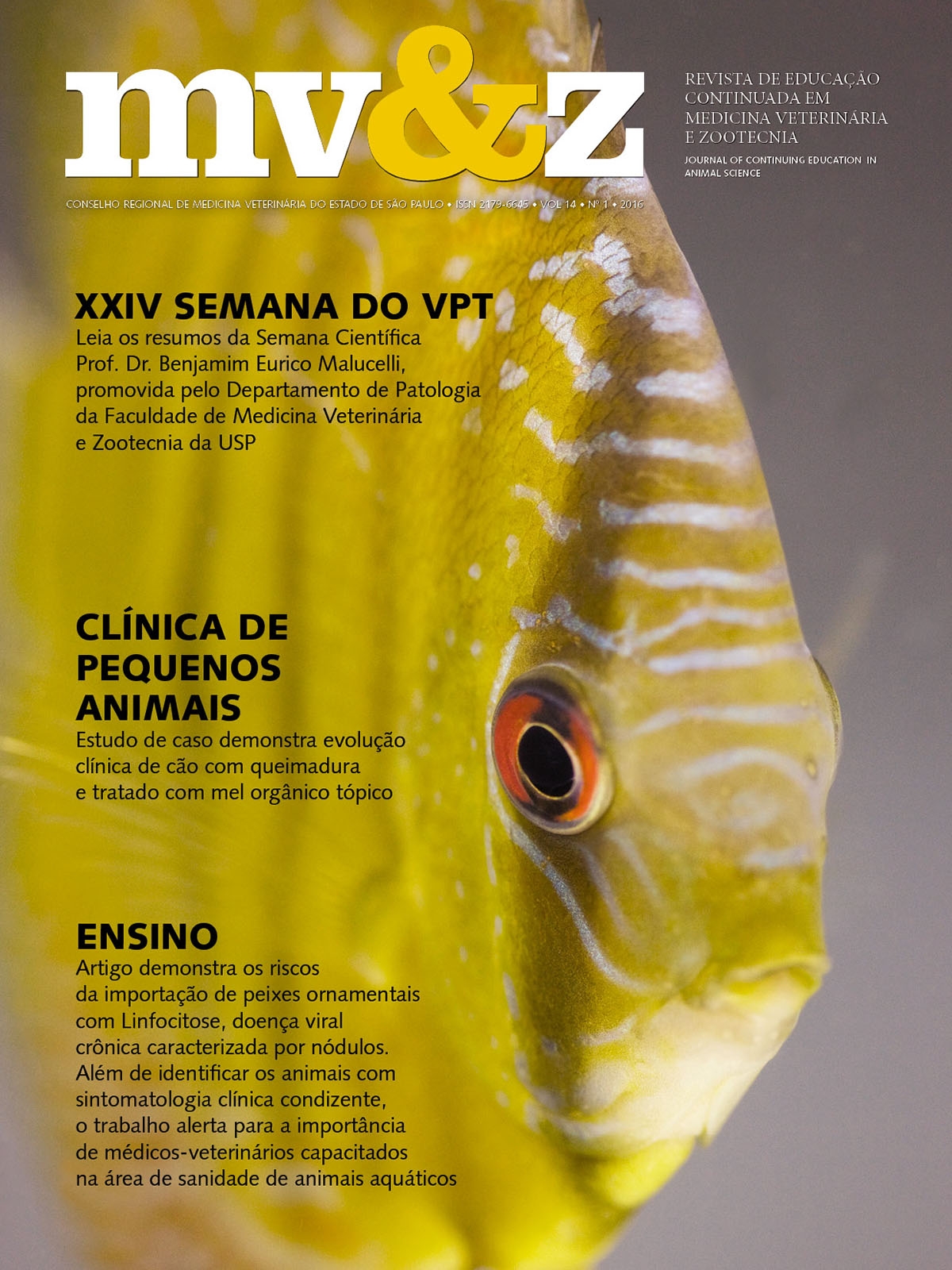Shiga toxin-producing Escherichia coli (STEC) in psittacine birds: molecular characterization, phylogenetic analysis and antimicrobial susceptibility
Main Article Content
Abstract
Among the psittacidae bred as pets, the cockatiels (Nymphicus hollandicus), agapornis (Agapornis spp.), and budgerigars (Melopsittacus undulatus) stand out, because they keep people company, and have a colorful plumage, although the zoonotic risks are little known. Escherichia coli (E. coli) is a facultative anaerobic Gram-negative bacterium belonging to the Enterobacteriaceae family. Some E. coli pathotypes are considered as diarrheagenic, and the molecular techniques are useful in identifying the genetic traits of virulence. The agent does not belong to the microbiota of psittacidae. This study investigated the presence of STEC (diarrheagenic Shiga toxin-producing E. coli) in the feces from cockatiels, budgerigars, and agapornis.
Article Details
1. Autores mantém os direitos autorais e concedem à revista o direito de primeira publicação, com o trabalho licenciado sob a Creative Commons Atribuição-NãoComercial-SemDerivações 4.0 Internacional
2. Autores têm autorização para assumir contratos adicionais separadamente, para distribuição não-exclusica da versão do trabalho publicada nesta revista (ex.: publicar em repositório institucional ou como capítulo de livro), com reconhecimento de autoria e publicação inicial nesta revista.
3. Autores têm permissão e são estimulados a publicar e distribuir seu trabalho online (ex.: em repositórios instituicionais ou na sua página pessoal) a qualquer ponto antes ou durante o processo editorial, já que isso pode gerar alterações produtivas, bem como aumentar o impacto e a citação do trabalho publicado (Veja O Efeito do Acesso Livre);
